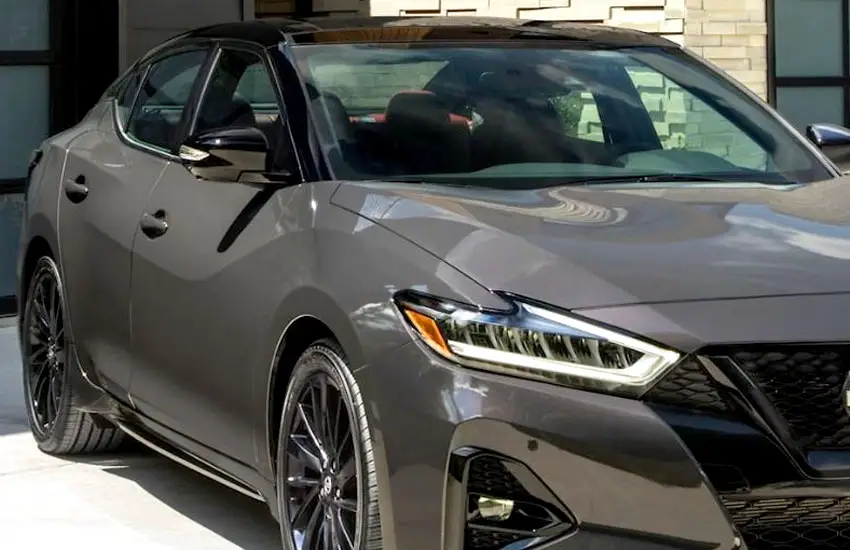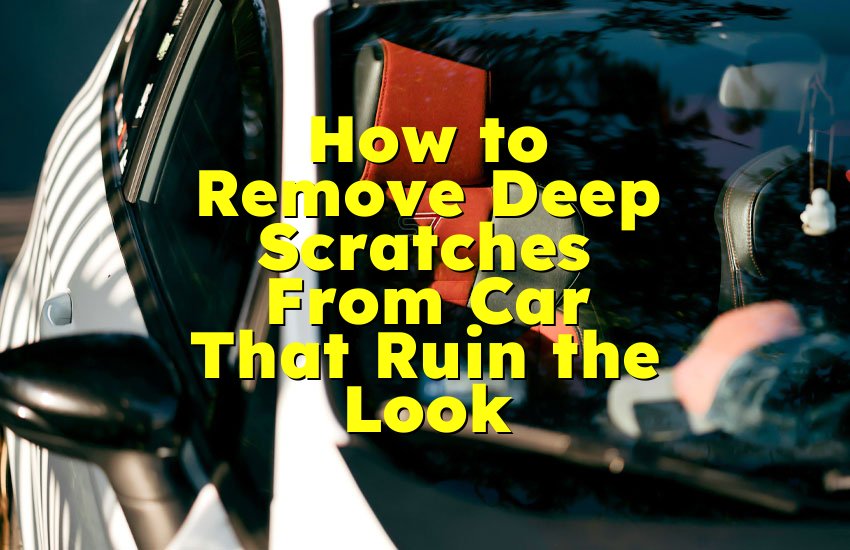As an Amazon Associate, I earn from qualifying purchases at no extra cost to you.
What is Continuously Variable Transmission: The Ultimate Guide
In the world of automobiles, transmission is like the beating heart of a vehicle, keeping everything running smoothly and efficiently. Among the various types of transmissions, one stands out for its unique design and functionality: the Continuously Variable Transmission, or CVT. This technology has changed the way vehicles operate, offering a smoother ride and better fuel efficiency. But what exactly is a CVT, and how does it work? Let's explore this fascinating technology in detail.
Understanding Transmission Types
Before diving into the specifics of CVTs, it's essential to understand the different types of transmissions commonly used in vehicles. The two main categories of transmissions are automatic and manual.
Automatic Transmission
Automatic transmissions handle gear changes without the driver's input. They have a complex system of gears and hydraulics that adjust to the vehicle’s speed and load. Traditional automatic transmissions use a set of gears, allowing for a fixed number of gear ratios. When the vehicle accelerates, it shifts through these gears, providing power to the wheels. While automatic transmissions are user-friendly and convenient, they can sometimes lead to a less engaging driving experience.
Manual Transmission
In contrast, manual transmissions require the driver to shift gears manually using a clutch pedal and gear stick. This system provides more control over the vehicle's power and speed. However, it demands more skill and attention from the driver, which can be a drawback for some. While many drivers enjoy the connection and engagement a manual transmission offers, others prefer the simplicity of an automatic system.
The Emergence of CVTs
CVTs bring a different approach to vehicle transmission. Unlike traditional automatic and manual systems, CVTs use a system of pulleys and belts to provide a seamless range of gear ratios. This means that instead of shifting from one gear to another, a CVT continuously adjusts to find the most efficient ratio for the driving conditions. This ability to adapt leads to a smoother driving experience and better fuel efficiency.
How Does a CVT Work?
To truly appreciate the advantages of a Continuously Variable Transmission, it's important to understand how it works. A CVT consists mainly of two variable-diameter pulleys and a belt or chain that connects them. Here's a breakdown of its components and operation.
The Pulleys
At the heart of a CVT are two pulleys: the primary pulley connected to the engine and the secondary pulley connected to the wheels. Each pulley has two halves that can move closer together or farther apart. The distance between the halves determines the effective diameter of the pulley. When the diameter changes, it alters the gear ratio.
- Primary Pulley: The primary pulley receives power from the engine. As the engine speed increases, the pulley's diameter adjusts to provide the necessary gear ratio for acceleration.
- Secondary Pulley: The secondary pulley sends power to the wheels. It also changes its diameter based on the vehicle's speed and load, maintaining optimal efficiency.
The Belt
The belt or chain that connects the two pulleys is critical to the CVT’s operation. As one pulley changes size, the belt moves up or down the pulley, effectively changing the gear ratio. This constant adjustment allows the vehicle to accelerate smoothly without any noticeable shifts.
The Control System
A CVT is equipped with a control system that monitors various parameters, such as engine speed, vehicle speed, and load. This system continuously calculates the best gear ratio to ensure optimal performance and efficiency. It adjusts the pulleys’ positions automatically, allowing the driver to focus on the road rather than shifting gears.
Benefits of CVT
The unique design of a CVT offers several benefits over traditional transmission systems:
- Smooth Acceleration: Since there are no fixed gear shifts, acceleration feels smooth and continuous. Drivers often notice a lack of the "shift shock" that can occur in automatic transmissions.
- Improved Fuel Efficiency: CVTs are designed to keep the engine operating at its most efficient speed. This means better fuel economy, particularly in stop-and-go traffic or during highway driving.
- Optimal Power Delivery: By constantly adjusting to the best gear ratio, a CVT ensures that power is delivered smoothly to the wheels, making it easier for the vehicle to accelerate.
- Reduced Emissions: With better fuel efficiency comes reduced emissions. Many modern CVTs help meet stricter environmental regulations by minimizing the amount of fuel burned.
- Less Mechanical Complexity: A CVT has fewer moving parts than a traditional automatic transmission, which can lead to lower maintenance costs over time.

Applications of CVT in Vehicles
Continuously Variable Transmissions have become increasingly popular across various types of vehicles. Understanding where they are used can help us appreciate their significance in modern automotive design.
Passenger Vehicles
CVTs are commonly found in many passenger cars, particularly compact and midsize vehicles. Automakers like Honda, Nissan, and Toyota have embraced CVTs for their fuel-efficient models. These transmissions provide a smoother ride, making them appealing for daily commuting and long-distance travel.
Hybrid Vehicles
Hybrid vehicles, which combine a traditional internal combustion engine with electric propulsion, often utilize CVTs. The seamless power delivery of a CVT complements the performance of electric motors, allowing hybrids to operate efficiently across different driving conditions. This is especially beneficial in urban settings where stop-and-go driving is prevalent.
Small SUVs and Crossovers
As the popularity of SUVs and crossovers has surged, so has the use of CVTs in these vehicles. Automakers have turned to CVTs to enhance fuel efficiency and provide a smooth driving experience, catering to consumers who prioritize comfort and economy.
Motorcycles and Scooters
Interestingly, CVTs are also prevalent in motorcycles and scooters. These two-wheeled vehicles benefit from the smooth acceleration and ease of use that a CVT offers. Riders can focus on enjoying the ride without the need for manual gear shifting.
Future Trends
The automotive industry is constantly evolving, and CVTs are likely to play a significant role in the future. As manufacturers look to improve fuel efficiency and reduce emissions, the CVT design will continue to be refined. Innovations in materials and technology could lead to even better performance and durability, making CVTs a mainstay in future vehicles.
Common Misconceptions About CVTs
As with any technology, there are misconceptions surrounding Continuously Variable Transmissions. Understanding these myths can help clarify how CVTs work and their benefits.
CVTs Are Weak and Unreliable
One common belief is that CVTs are less durable than traditional transmissions. While early CVTs faced reliability issues, modern advancements have greatly improved their durability. Manufacturers have designed CVTs to withstand the rigors of everyday driving, and many come with lengthy warranties.
CVTs Are No Fun to Drive
Another misconception is that CVTs provide a dull driving experience. While they lack the engaging gear shifts of manual or traditional automatic transmissions, many drivers appreciate the smooth acceleration and responsive performance of CVTs. Additionally, some automakers have implemented simulated gear shifts to enhance the driving experience.
CVTs Can't Handle High Power
Some people think CVTs are only suitable for low-powered vehicles. However, many high-performance vehicles now utilize CVTs effectively. Advances in technology have allowed CVTs to handle increased power output, making them viable for sports cars and performance-oriented models.
CVTs Are Expensive to Repair
While CVT repairs can sometimes be costly, they are not necessarily more expensive than repairing traditional automatic transmissions. Routine maintenance, such as fluid changes, can help extend the life of a CVT, just as with any other transmission type.
I hope this exploration of Continuously Variable Transmissions has clarified what they are and how they function. With their smooth operation and fuel efficiency, CVTs represent an exciting advancement in automotive technology. As they continue to evolve, they will undoubtedly remain an essential part of the automotive landscape.
Are These Questions in Your Mind?
Is it true that CVTs improve fuel economy significantly?
Yes, CVTs are designed to optimize engine performance, helping to improve fuel economy significantly compared to traditional transmissions.
Can CVTs be used in all types of vehicles?
While CVTs are popular in many passenger cars and hybrids, they are not suitable for all vehicle types, particularly high-torque applications like heavy-duty trucks.
Do I need to maintain a CVT differently than an automatic transmission?
Yes, CVTs require specific maintenance, including regular fluid changes and inspections, to ensure they operate smoothly and efficiently.
Is it common for CVTs to fail?
While CVTs can fail, modern designs are much more reliable than earlier versions. Regular maintenance can help prevent issues.
Can I tow with a CVT-equipped vehicle?
Towing capabilities depend on the specific vehicle and its design. Many CVTs are not recommended for heavy towing, so checking the manufacturer's guidelines is essential.
Do I feel a difference in driving a CVT versus an automatic?
Yes, driving a CVT offers a different experience, with smooth acceleration and no noticeable shifts compared to traditional automatic transmissions.
Is it more economical to repair a CVT than to replace it?
The cost-effectiveness of repairing versus replacing a CVT depends on the extent of the damage. In some cases, repairing may be more economical, while in others, replacement may be the better option.
Can CVTs handle high-performance engines?
Yes, advancements in CVT technology have allowed them to handle higher power outputs, making them suitable for some high-performance vehicles.
Is it necessary to use a specific type of fluid in a CVT?
Yes, CVTs typically require specific fluids designed for their unique operation, so using the manufacturer-recommended fluid is crucial.
Can I convert my vehicle to a CVT?
Converting a vehicle to a CVT is generally not practical and could be costly. It’s best to choose a vehicle that comes with a CVT from the factory.











